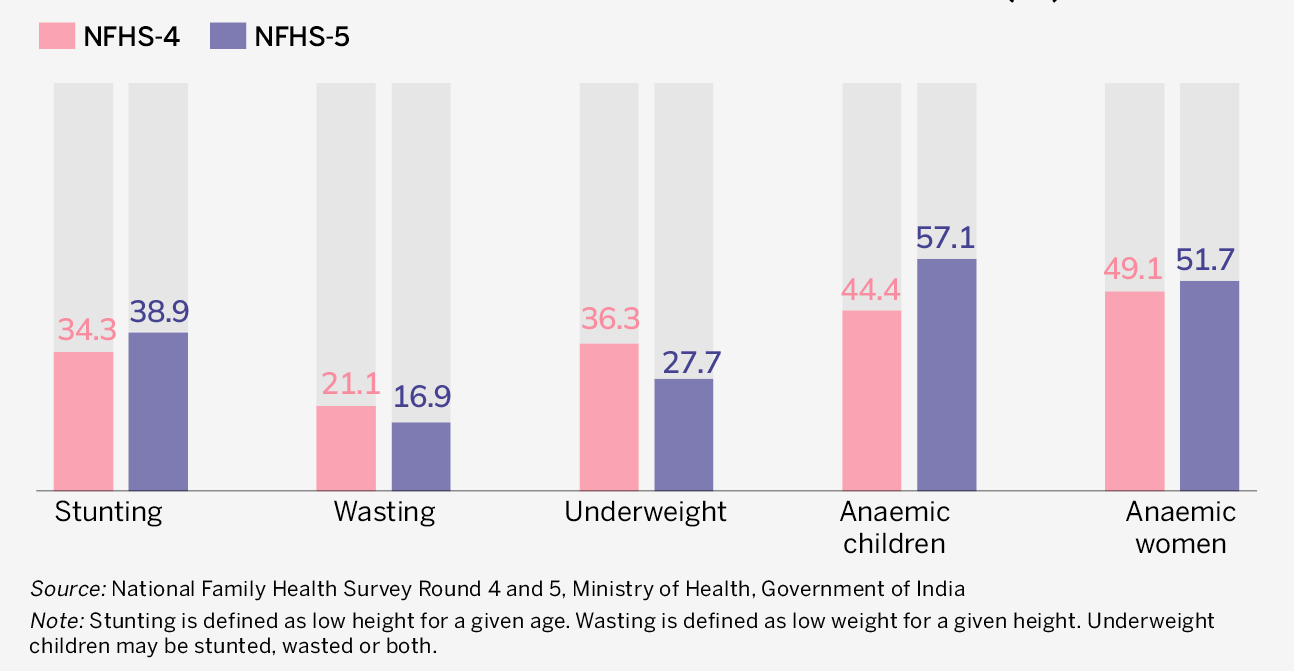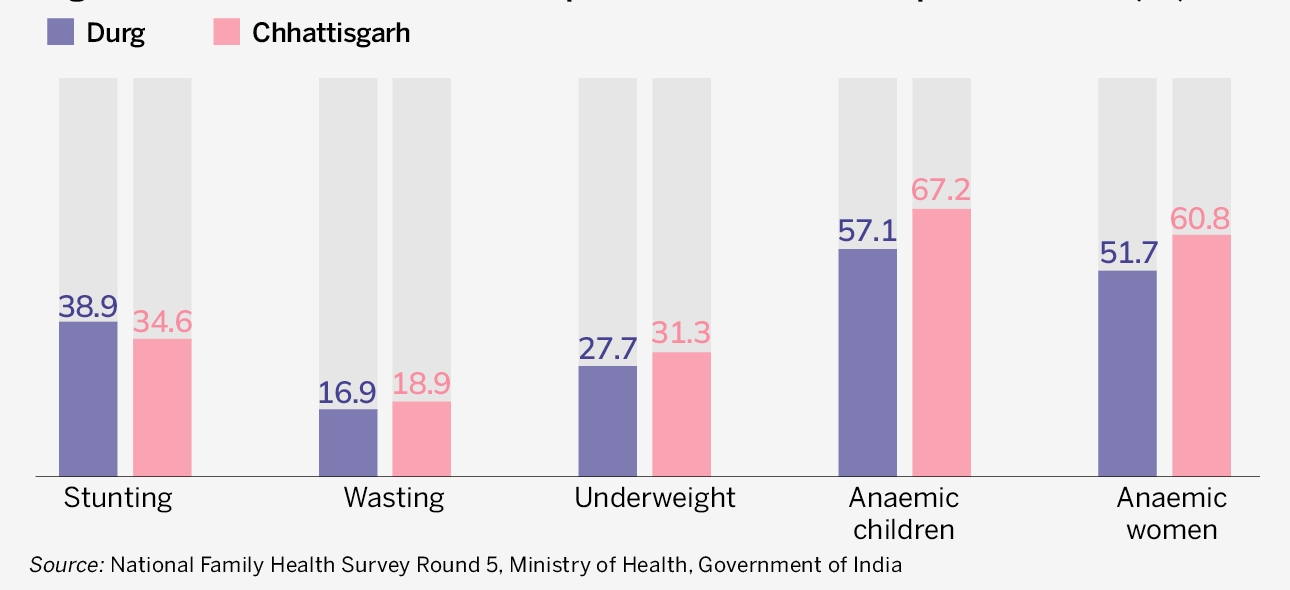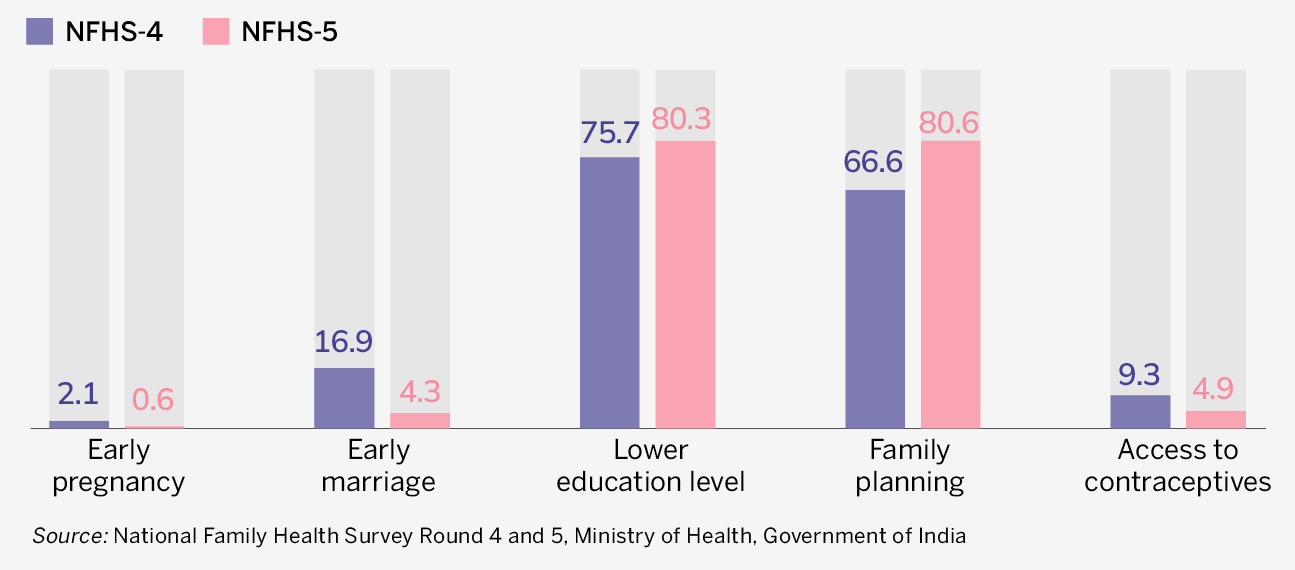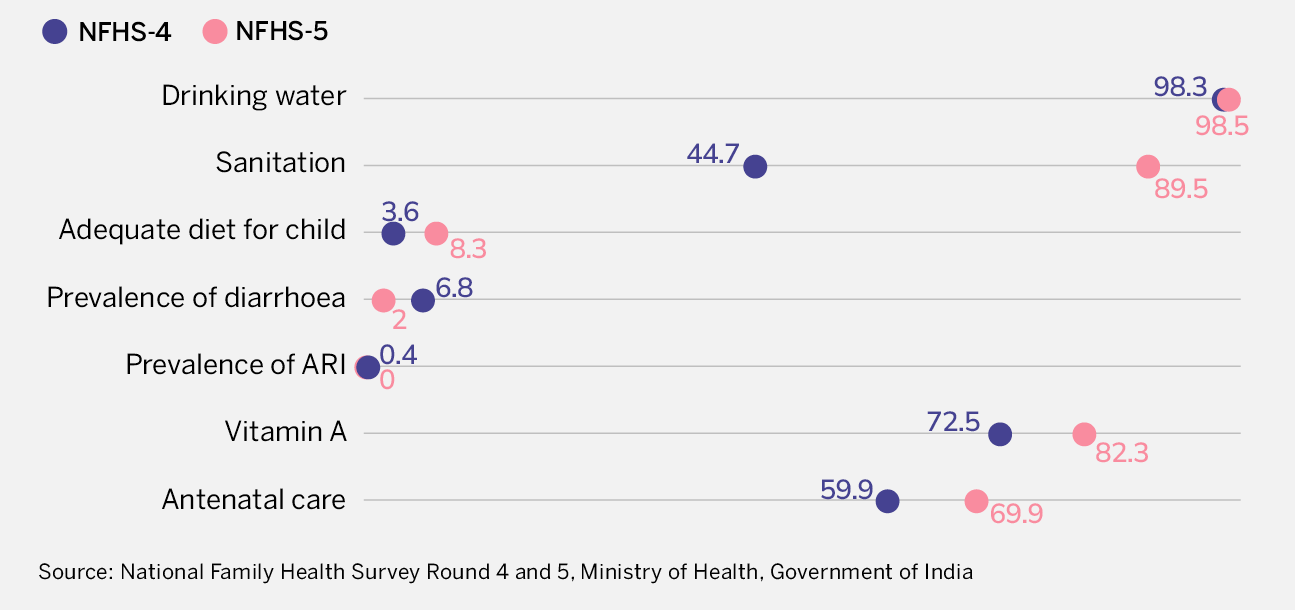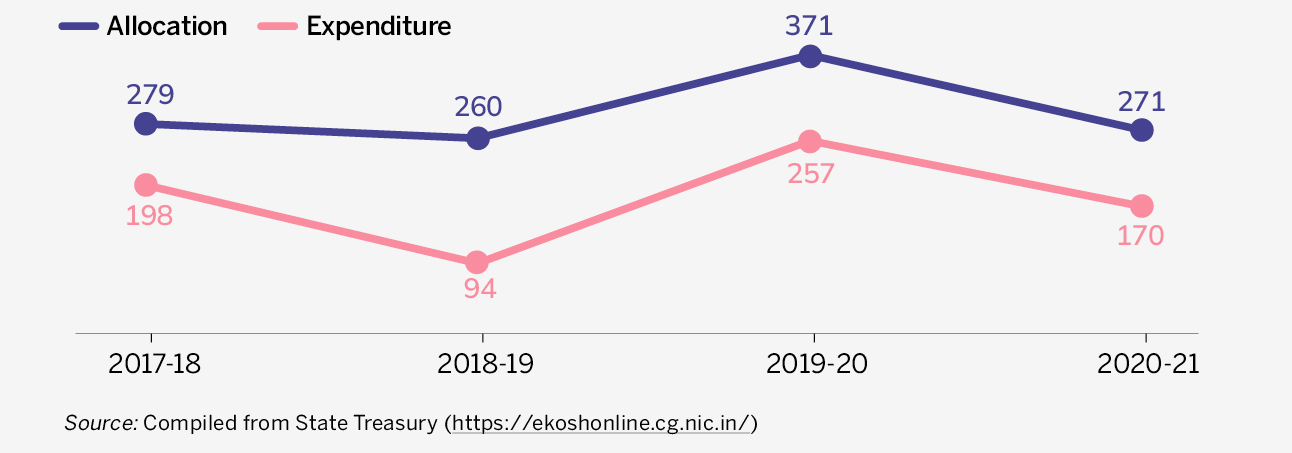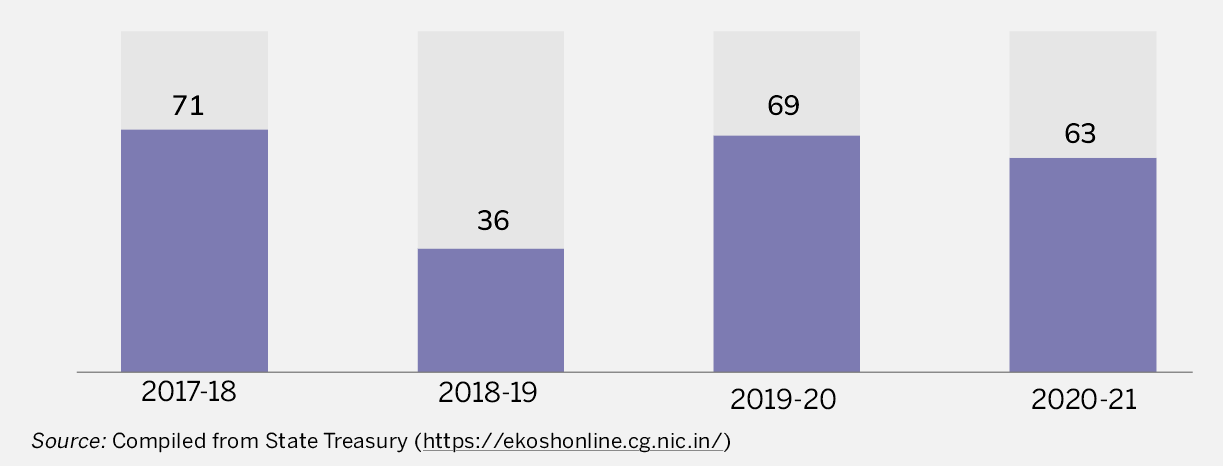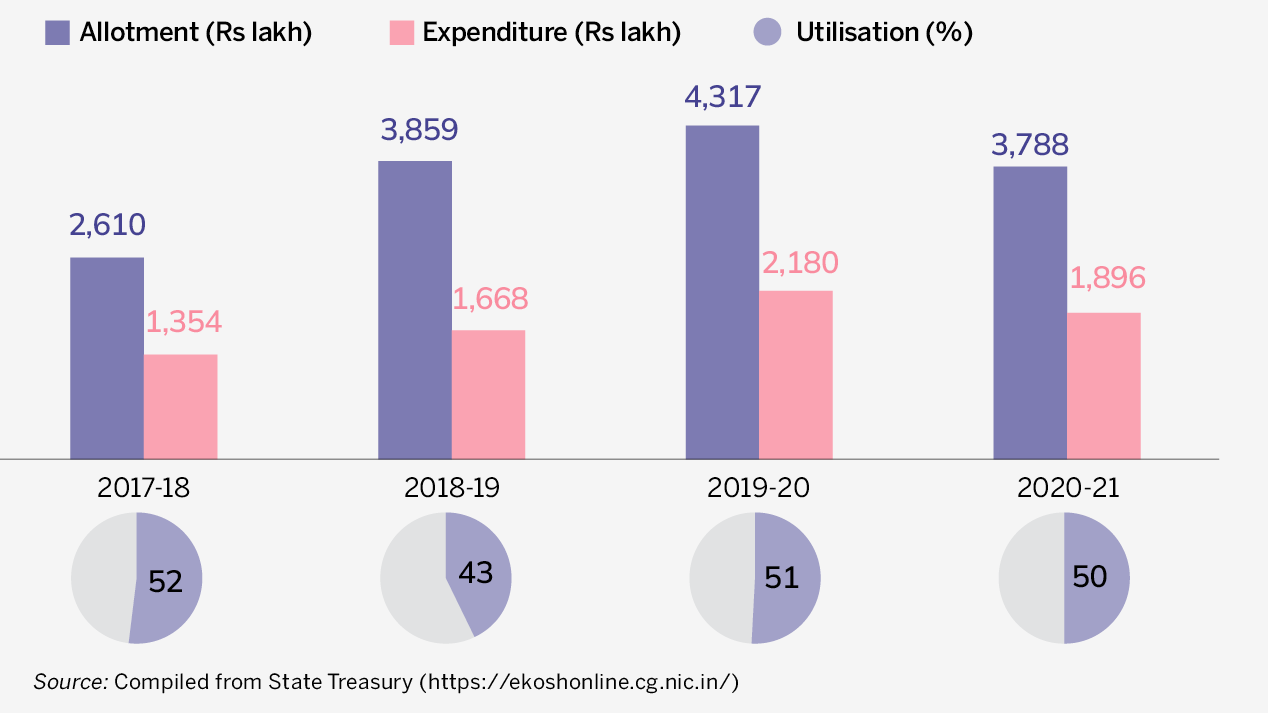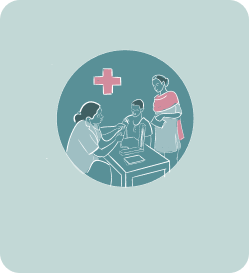Given the importance of ICDS in providing nutrition and helping in the overall development of children, different data/information about the scheme should be readily available to and accessible by the common masses.
The following table shows a list of essential data points/information regarding ICDS that various stakeholders will find useful. The availability and accessibility of this information is critical to ensure the scheme’s success. The current level of information available has been evaluated for each of the indicators.
Transparency and Accountability Index
Availability
Is the data is available at the district level?
Fiscal (input) indicators: Yes, on the district treasury website. It is available for various ICDS components such as Supplementary Nutrition Programme. Data is available for allotment and expenditure under these components.
Outcome indicators: Yes. It is available online for nutrition-specific indicators such as stunting, wasting, anaemia among children, etc, from the National Family Health Survey.
Is the data available via online/offline mode?
Fiscal (input) indicators: Online
Outcome indicators: Online
Accessibility
Is the data available in an 'open access' format?
Fiscal (input) indicators: Yes
Outcome indicators: Yes
Is the data published in machine-readable formats, such as CSV, Excel etc., and is it easily reusable?
Fiscal (input) indicators: Yes. Data can be downloaded in Excel format.
Outcome indicators: Data is available in PDF format.
Is the data published in multiple languages?
Fiscal (input) indicators: No, English only
Outcome indicators: No, English only
Completeness/Comprehensiveness
Is the data complete or partial?
Fiscal (input) indicators: Partial. Comprehensive data on the scheme is not available. Only component-wise information is available.
Outcome indicators: NFHS data has comprehensive district-wise information on health and nutrition indicators.
Timeliness of Data that is available
Is the data generated on a timely and regular basis?
Fiscal (input) indicators: Yes
Outcome indicators: Yes
How frequently is the data updated?
Fiscal (input) indicators: Annual
Outcome indicators: NFHS data is available at different intervals each time. The latest survey was conducted after an interval of three years.
Which year does the latest data cover?
Fiscal (input) indicators: 2022-23 (until December)
Outcome indicators: For NFHS, data is available up to 2019-20.
User-friendliness and relevance of data that is available
Is the data easy to understand and comprehend and are the analytics published online? (Is it free of technical codes and difficult terminology?)
Fiscal (input) indicators: To download ICDS data from the treasury, knowledge of DDO/scheme codes is required.
Outcome indicators: Yes, analytics produced by NFHS are relevant and user friendly.
Public participation and accountability
Is there space for people to participate in planning/budgeting/monitoring/evaluation/auditing of the scheme at the district/block/panchayat level?
No
Are people physically present and actively involved in the consultations/meetings in any of the above tiers of programme design and implementation?
No
If there is no possibility of physical participation, are there other 'means' of participation?
No
Is there any provision for a social audit of the scheme?
No
Are social audits conducted as per norms?
No
Are social audit reports publicly available?
No
Is there any grievance redressal mechanism for beneficiaries?
Toll free number 14408 (an initiative by the Central Government)
